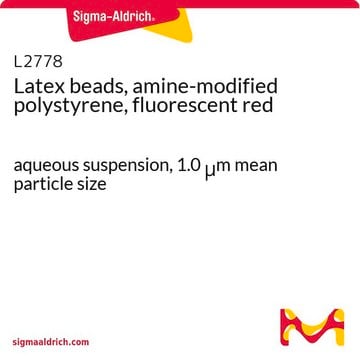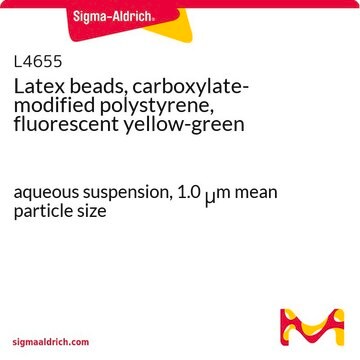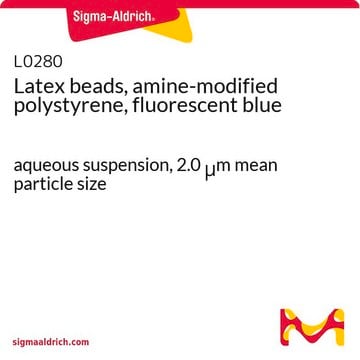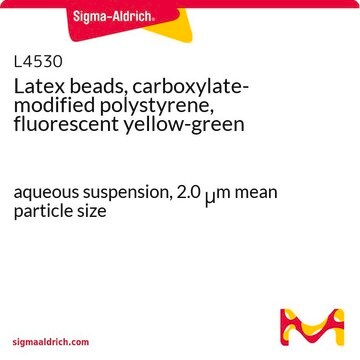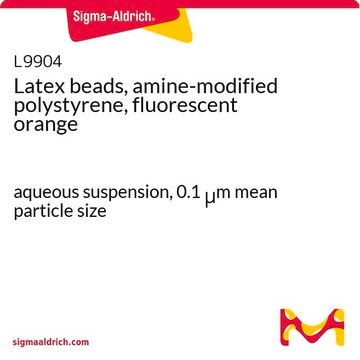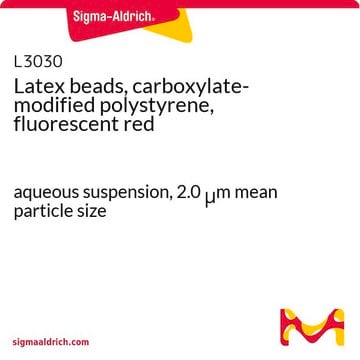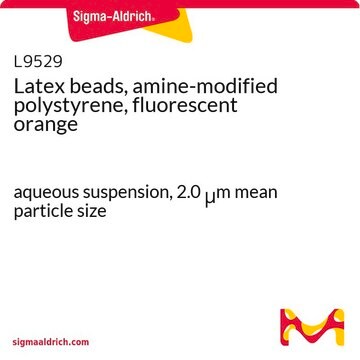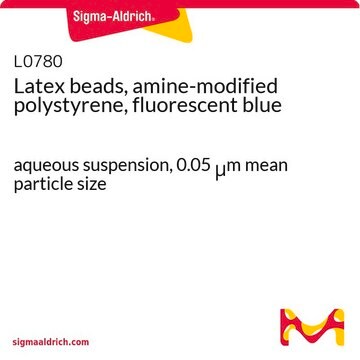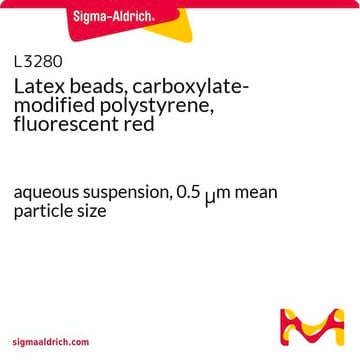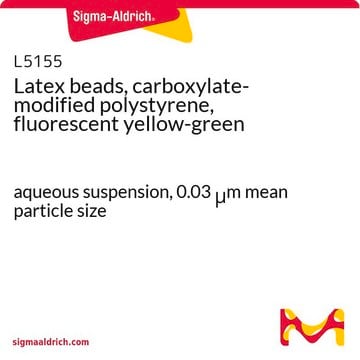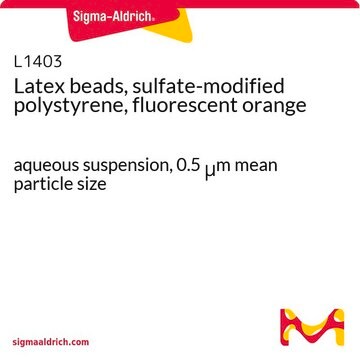L1030
Latex beads, amine-modified polystyrene, fluorescent yellow-green
aqueous suspension, 1.0 μm mean particle size
Sign Into View Organizational & Contract Pricing
All Photos(1)
About This Item
Recommended Products
form
aqueous suspension
composition
Solids, 2.5%
technique(s)
cell based assay: suitable
mean particle size
1.0 μm
fluorescence
λex ~470 nm; λem ~505 nm
application(s)
cell analysis
Looking for similar products? Visit Product Comparison Guide
Application
Latex beads, amine-modified polystyrene, fluorescent yellow-green have been used:
- in the characterization of nano- and microplastics
- in tendon preparation to label tendon fascicles to enable precise localization of the tissue surface
- in phagocytosis assay to label spleen cells
Biochem/physiol Actions
Polystyrene latex beads can be used to create latex agglutination systems. It can be used to study the transmission of Mycobacterium leprae, the causative pathogen of leprosy. These beads are also utilized to develop a method for mass screening for both pulmonary and extrapulmonary tuberculosis.
Storage Class Code
10 - Combustible liquids
WGK
WGK 2
Flash Point(F)
Not applicable
Flash Point(C)
Not applicable
Certificates of Analysis (COA)
Search for Certificates of Analysis (COA) by entering the products Lot/Batch Number. Lot and Batch Numbers can be found on a product’s label following the words ‘Lot’ or ‘Batch’.
Already Own This Product?
Find documentation for the products that you have recently purchased in the Document Library.
Customers Also Viewed
Ivan Gusachenko et al.
Biophysical journal, 102(9), 2220-2229 (2012-07-25)
Collagen is a triple-helical protein that forms various macromolecular organizations in tissues and is responsible for the biomechanical and physical properties of most organs. Second-harmonic generation (SHG) microscopy is a valuable imaging technique to probe collagen fibrillar organization. In this
James M May et al.
Archives of biochemistry and biophysics, 440(2), 165-172 (2005-08-02)
Since activated macrophages generate potentially deleterious reactive oxygen species, we studied whether ascorbic acid might function as an antioxidant in these cells. Thioglycollate-elicited murine peritoneal macrophages contained about 3 mM ascorbate that was halved by culture in ascorbate-free medium. However
Amany Ramah et al.
Veterinary immunology and immunopathology, 220, 109991-109991 (2019-12-20)
Tannin is one of the most common phytochemical secondary phenolic metabolites, which is widely distributed in various plant production systems. Dietary intake of tannin can exert different actions on the immune system. The aim of this study was to evaluate
Soumya M Turaga et al.
Neuro-oncology, 22(11), 1591-1601 (2020-06-28)
Glioblastoma (GBM) is the most aggressive primary brain tumor and has a dismal prognosis. Previously, we identified that junctional adhesion molecule A (JAM-A), a cell adhesion molecule, is highly elevated in human GBM cancer stem cells and predicts poor patient
Zhangxin Guan et al.
Frontiers in cellular neuroscience, 14, 260-260 (2020-09-26)
Loss of function mutations in the progranulin (PGRN) gene is a risk factor for Alzheimer's disease (AD). Previous works reported that the deficiency of PGRN accelerates β-amyloid (Aβ) accumulation in AD transgenic mouse brains while overexpression of PGRN could restrain
Our team of scientists has experience in all areas of research including Life Science, Material Science, Chemical Synthesis, Chromatography, Analytical and many others.
Contact Technical Service